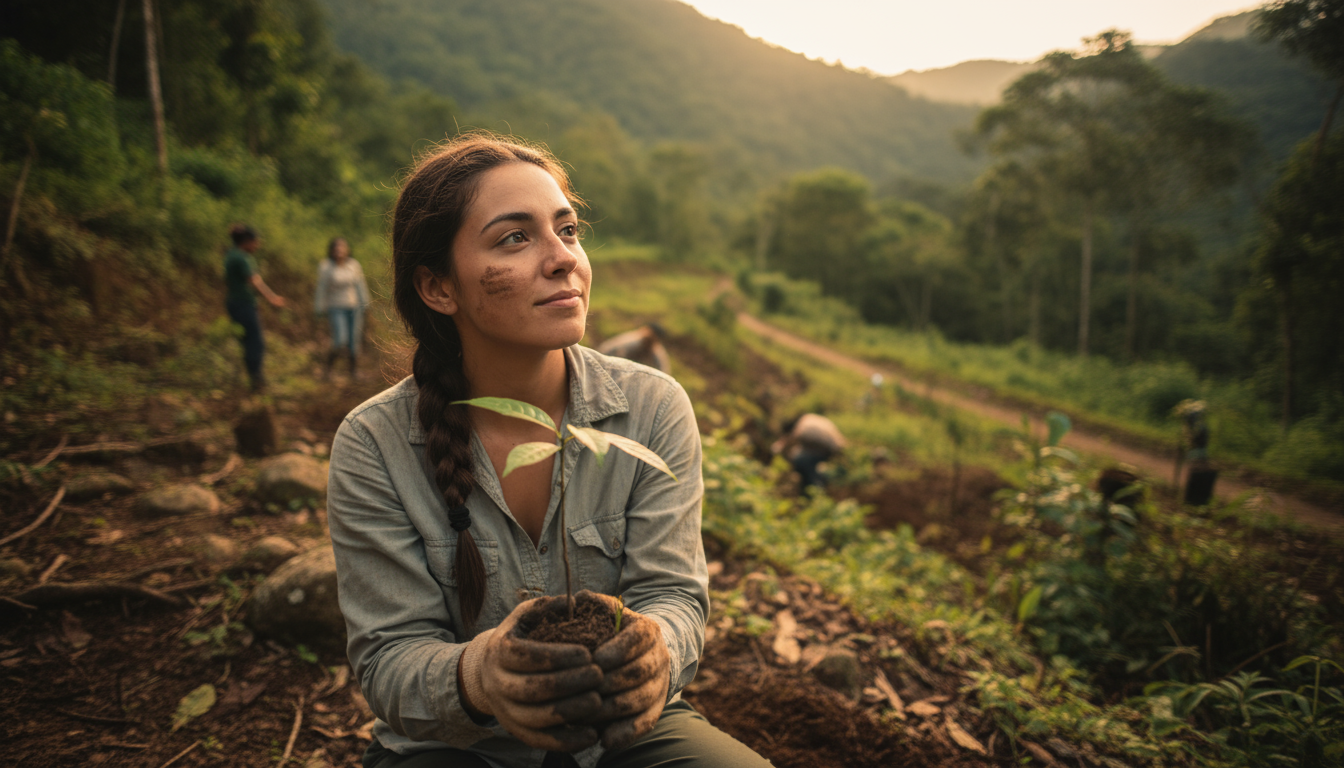For years, the travel industry has rallied behind the concept of “sustainable tourism,” a goal focused on mitigating the negative impacts of travel. However, as the urgency of climate change and social inequality grows, a new, more proactive paradigm is emerging: Regenerative Tourism. This is not just about doing less harm; it is about actively contributing to the healing and restoration of destinations, local economies, and the travelers themselves. The shift from ‘sustaining’ to ‘regenerating’ marks a fundamental change in how we approach global mobility and experiential travel, setting a major trend for 2025 and beyond.
The core philosophy of Regenerative Tourism posits that a place should be left better—ecologically, socially, and culturally—than it was found. This requires a deep, reciprocal relationship between the visitor and the visited location, moving past superficial sightseeing toward meaningful engagement and contribution.
What Defines the Regenerative Traveler?
The regenerative traveler is distinct from the traditional tourist. They are seeking more than just a break; they are looking for purpose, authenticity, and personal transformation. They are drawn to “emotional and authentic journeys” such as volun-tourism, wellness retreats, and eco-conscious cultural experiences.
- Conscious Contribution: Instead of merely consuming services, travelers engage in local projects, such as habitat restoration, community development initiatives, or ethical conservation programs.
- Deep Cultural Immersion: The focus is on authentic connections with local people and their traditions, ensuring that tourism revenue directly benefits the community and helps preserve cultural heritage.
- Holistic Wellness: The journey often incorporates elements of personal healing, mindfulness, and connection to nature, making the experience restorative for the body and mind.
The goal is a reciprocal exchange: the destination receives investment, conservation support, and cultural respect, while the traveler gains a profound sense of fulfillment and personal growth.
Destinations Leading the Regenerative Charge
Pioneering destinations are implementing models that measure success not just by visitor numbers, but by the ecological and social health of the region.
1. The Costa Rican Model of Biophilic Integration
Costa Rica, a long-time leader in eco-tourism, is evolving its model. Here, Regenerative Tourism is being integrated into community-led initiatives focused on biodiversity. For instance, travelers might spend time on small, family-owned farms learning sustainable agriculture, or participate in reforestation efforts in critical ecological corridors. The concept is “biophilia”—the innate human tendency to connect with nature—which becomes the central healing mechanism for both the land and the visitor.
2. Indigenous-Led Restoration in the Pacific Northwest
In parts of the Pacific Northwest and Alaska, Indigenous communities are utilizing regenerative principles to reclaim and revitalize ancestral lands. Visitors participate in knowledge exchange, learning traditional ecological practices like controlled burns or sustainable harvesting, which actively restore the ecosystem. This model ensures that cultural wisdom drives the economic benefit, making the experience deeply meaningful and respectful.
3. Mediterranean Marine Regeneration Projects
In parts of Greece and Italy, yachting and cruise operations are increasingly mandated to contribute to marine health. Luxury travelers booking high-end cruises and yachts are funding and participating in scientific endeavors such as coral reef restoration or data collection on marine life. This merges the high-end experience of sailing with a direct, positive ecological outcome, redefining the value proposition of a luxury vacation.
The Role of Technology in Regenerative Travel
The future of Regenerative Tourism is inextricably linked to technology, especially in ensuring transparency and ethical spending.
- Blockchain for Transparency: Blockchain technology is being explored to create transparent supply chains, allowing travelers to see exactly where their money goes. A traveler could track their resort fee to a specific conservation project or local artisan, guaranteeing an ethical return on their investment.
- AI for Ecosystem Health: Artificial Intelligence tools are used to monitor ecosystem health in real time. AI-powered sensors track air and water quality, as well as wildlife populations, providing data that guides regenerative efforts and informs travelers about the immediate positive impact of their visit.
- Digital Visas and Permitting: New digital systems can help manage visitor flow, ensuring that fragile destinations are not overwhelmed. Digital permits and smart visas can enforce limits, safeguarding the environment while maintaining a high-quality, exclusive experience for visitors.
The Healing Component: How Travelers Benefit
For the individual, Regenerative Tourism offers a powerful antidote to modern life.
- Mental and Emotional Restoration: By shifting the focus from passive consumption to active contribution, travelers gain a sense of purpose and achievement. This hands-on engagement with nature and community has proven therapeutic benefits, combating burnout and fostering resilience.
- Deeper Connections: Moving beyond the tourist bubble, regenerative experiences facilitate genuine connections with locals, leading to a richer understanding of the world and one’s place within it.
- Sustainability as a Practice: Engaging in sustainable practices during the trip often inspires travelers to adopt them at home, creating a lasting, positive feedback loop that extends beyond the holiday itself.
Conclusion
The evolution from sustainability to Regenerative Tourism represents the maturation of the travel industry. It is a powerful movement that recognizes the interconnectedness of human well-being and planetary health. As travelers increasingly seek authenticity, purpose, and opportunities for personal growth, destinations that embrace these principles—from remote wellness retreats to high-tech, ethical cruises—will define the future of global mobility. The next great journey is not just about where you go, but how you help it grow. This is the heart of the regenerative movement, promising a profound healing for both the destinations we love and ourselves.


